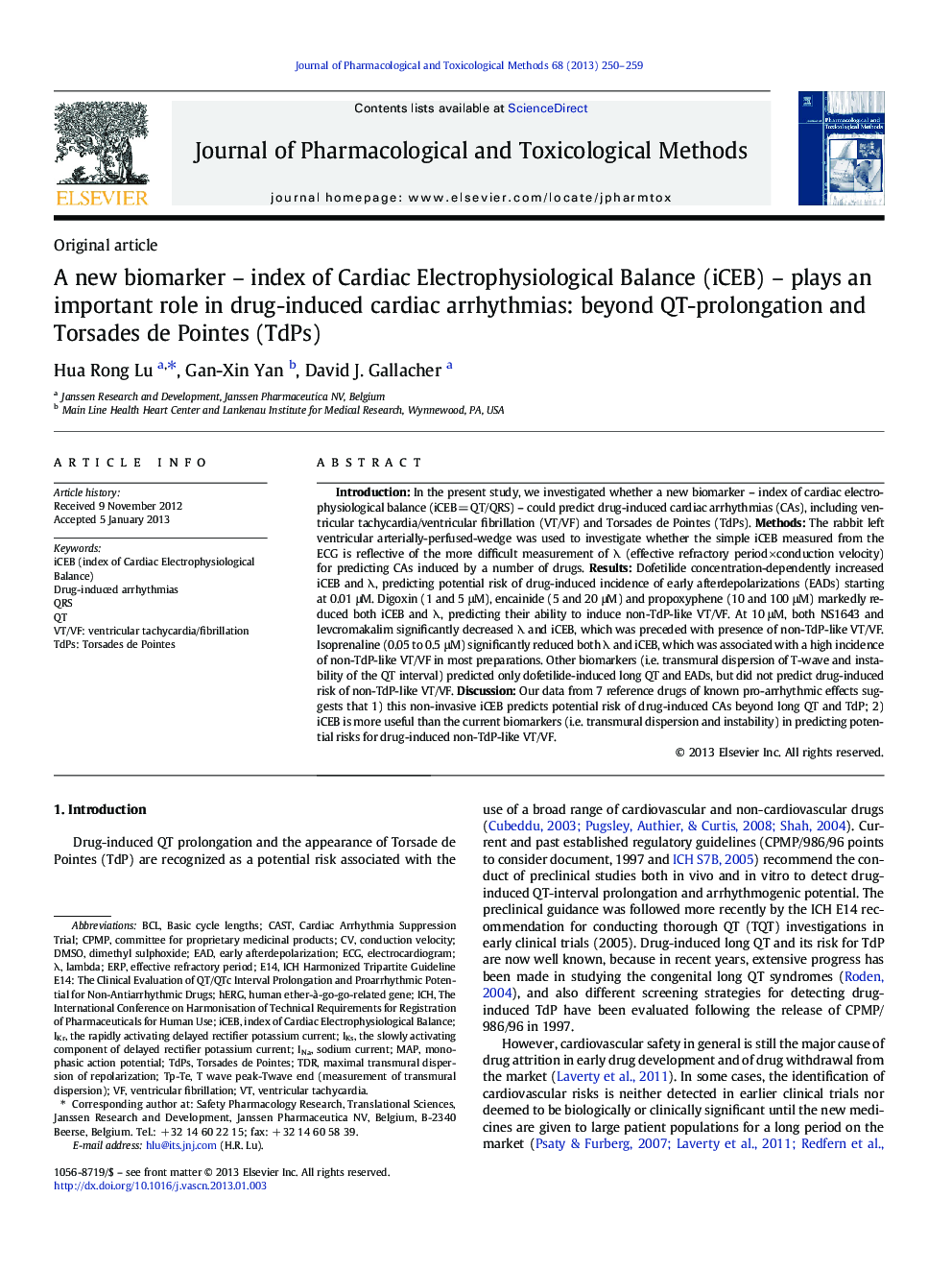| Article ID | Journal | Published Year | Pages | File Type |
|---|---|---|---|---|
| 2549183 | Journal of Pharmacological and Toxicological Methods | 2013 | 10 Pages |
IntroductionIn the present study, we investigated whether a new biomarker – index of cardiac electrophysiological balance (iCEB = QT/QRS) – could predict drug-induced cardiac arrhythmias (CAs), including ventricular tachycardia/ventricular fibrillation (VT/VF) and Torsades de Pointes (TdPs).MethodsThe rabbit left ventricular arterially-perfused-wedge was used to investigate whether the simple iCEB measured from the ECG is reflective of the more difficult measurement of λ (effective refractory period × conduction velocity) for predicting CAs induced by a number of drugs.ResultsDofetilide concentration-dependently increased iCEB and λ, predicting potential risk of drug-induced incidence of early afterdepolarizations (EADs) starting at 0.01 μM. Digoxin (1 and 5 μM), encainide (5 and 20 μM) and propoxyphene (10 and 100 μM) markedly reduced both iCEB and λ, predicting their ability to induce non-TdP-like VT/VF. At 10 μM, both NS1643 and levcromakalim significantly decreased λ and iCEB, which was preceded with presence of non-TdP-like VT/VF. Isoprenaline (0.05 to 0.5 μM) significantly reduced both λ and iCEB, which was associated with a high incidence of non-TdP-like VT/VF in most preparations. Other biomarkers (i.e. transmural dispersion of T-wave and instability of the QT interval) predicted only dofetilide-induced long QT and EADs, but did not predict drug-induced risk of non-TdP-like VT/VF.DiscussionOur data from 7 reference drugs of known pro-arrhythmic effects suggests that 1) this non-invasive iCEB predicts potential risk of drug-induced CAs beyond long QT and TdP; 2) iCEB is more useful than the current biomarkers (i.e. transmural dispersion and instability) in predicting potential risks for drug-induced non-TdP-like VT/VF.
